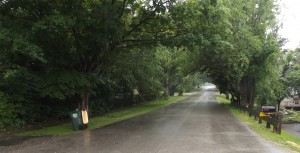Survey notes region’s residents care about trees, worried about Emerald Ash Borer
Chronicle Media — June 9, 2015
The Chicago area’s eight counties have more than 150 million trees that help make communities healthier, more sustainable and more beautiful
The Chicago area’s eight counties have more than 150 million trees that help make communities healthier, more sustainable and more beautiful.
Yet they face threats, with one of every five parkway trees likely to soon be destroyed by the emerald ash borer beetle.
Area residents are concerned, as evidenced by a recent survey commissioned by The Morton Arboretum.
The Lisle-based tree-focused institution’s Talking Trees survey reveals just how much Chicago-area residents care about our trees and the future of our urban forest–the trees that live alongside people in our city and suburbs.
Key findings include:
* A green neighborhood is an ideal neighborhood. Two-thirds of those surveyed place top importance on trees when deciding where they want to live, saying they would “never live in a neighborhood without trees.”
* Tree loss has an emotional impact. 60% of Chicago-area residents say they are concerned with the loss of trees in their city, while nearly half are specifically aware of the emerald ash borer beetle.
* Eight of 10 Chicagoans believe that our trees need human help to thrive, which is especially true in our populated cities, where trees undergo extra stress living alongside people and cars, as well as in smaller spaces. Yet, while 65% agree that the trees where they live need to be checked regularly for pests and diseases, only 41% know that our area’s trees need help getting enough water, and even less (36%) are aware that trees need mulch to thrive in cities.
* Chicago-area residents understand some of the benefits of trees. Most Chicagoans know that trees clean our air (86%), and “make me healthier” (66%). But only about half know that they have an impact on flooding (49%), and only slightly more know that trees increase a home’s value (56%), and protect against climate change (57%).
We understand the concept of “tree diversity” and its importance in the future of our cities. The best defense against future tree pests is to plant a wide variety of trees–and nearly three-fourths of those surveyed agree! According to the Arboretum’s experts, the best defense against major tree loss is to plant a varied selection of trees.
An estimated 10,000 tree species are threatened worldwide, trees that support ecosystems around the world. Yet, compared to threatened animals like the panda bear or bald eagle, trees receive much less awareness. In fact, only 3 in 10 Chicagoans can name an endangered or threatened tree, while nearly 6 of 10 Chicagoans can name an endangered animal.
Here are five easy ways residents can champion trees in their community:
* Water trees along the street. Trees near the street add hugely to the beauty and character of your neighborhood and increase your property values. Trees like long, slow drinks so leave the hose, barely dribbling, at the base of the tree for an hour or more. Or use a soaker hose.
* Protect tree bark. A tree’s outer and inner bark help guard against damage by weather, insects, animals, and organisms that can cause disease. Their bark is easily hurt if it is struck by lawnmowers and string trimmers. Be careful not to damage them when mowing and edging. Don’t chain bikes to trees or drill to hang swings.
* Watch out for roots. In confined areas, some trees’ roots are forced to the surface of the soil. Avoid mowing over those roots; damaging them can cut off the flow of water and nutrients.
* Mulch right. Mulch, wood chips or shredded bark placed over a tree’s roots, does a lot to help trees, keeping tree roots cooler and healthier in summer and preventing water from evaporating so tree roots can use it. Spread mulch in a wide, even, flat layer about 3 to 4 inches deep around the base of a tree. Don’t pile it against the trunk in the shape of a volcano; it can trap moisture that causes rot or harbors insects and diseases.
* Choose the right tree for the right location. Different kinds of trees need different conditions. Before you embark on planting a tree, make sure it is the right size and that you can give it the sun, shade and soil it needs to thrive in your yard. The Arboretum’s Plant Clinic can help.
For more tips and ways residents can champion trees in their neighborhoods and cities, visit www.mortonarb.org/championoftrees.







